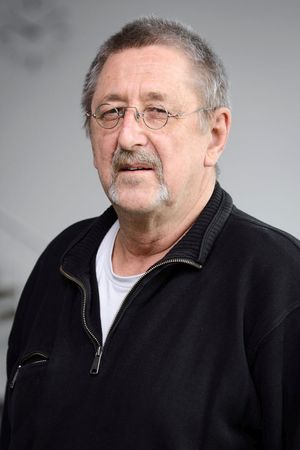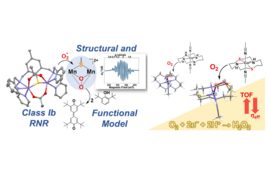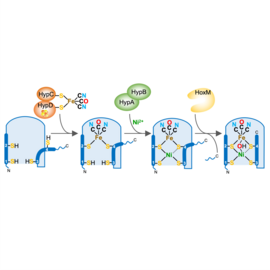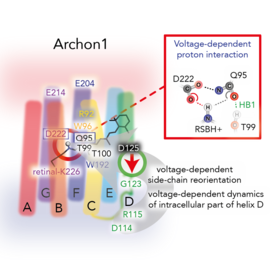Prof. Dr. Peter Hildebrandt
Research interests
- structure, dynamics, and function of biomolecules (redox enzymes, photoreceptors)
- electron transfer
- interfacial processes of immobilised proteins
- electric field effects
- vibrational spectroscopy, (resonance) Raman, IR, SE(R)R, SEIRA, spectroelectrochemistry, spectra calculations
Research Units in UniSysCat
Awards (selection)
| 2003– | Visiting Professor, ITQB, UN Lisboa (Portugal) |
| 1998 | Visiting Professor, Universidad Nacional de La Plata (Argentina) |
| 1993 | Heisenberg Fellowship of German Research Foundation (DFG) |
| 1990 | Bennigsen-Foerder Award |
| 1989 | ADUC Award of the German Chemical Society |
| 1985 | Otto-Hahn Medal of the Max Planck Society |
Publications (selection)
T. Werther, S. Wahlefeld, J. Salewski, U. Kuhlmann, I. Zebger, P. Hildebrandt, H. Dobbek, Redox-dependent substrate-cofactor interactions in the Michaelis-complex of a flavin-dependent oxidoreductase, Nature Communications 2017, 8, 16084.
A. Schmidt, L. Sauthof, M. Szczepek, M. Fernandez Lopez, F. Velazquez Escobar, B.M. Qureshi, N. Michael, D. Buhrke, T. Stevens, D. Kwiatkowski, D. von Stetten, M.A. Mroginski, N. Krauß, T. Lamparter, P. Hildebrandt, P. Scheerer, Structural snapshot of a bacterial phytochrome in its functional intermediate state. Nature Communications 2018, 9, 4012.
H. Biava, T. Schreiber, S. Katz, J.S. Völler, M. Stolarski, C. Schulz, N. Michael, N. Budisa, M. Kozuch, T. Utesch, P. Hildebrandt, Long-Range Modulations of Electric Fields in Proteins. J. Phys. Chem. B. 2018, 122, 8330–8342.
A. Ciaccafava, D. Tombolelli, L. Dominik, J. Fesseler, J.-H. Jeoung, H. Dobbek, M. A. Mroginski, I. Zebger, P. Hildebrandt, When the inhibitor tells more than the substrate: the cyanide-bound state of a carbon monoxide dehydrogenase, Chemical Science 2016, 7, 3162–3171.
F. Velazquez Escobar, P. Piwowarski, J. Salewski, N. Michael, M. Fernandez Lopez, A. Rupp, B. M. Qureshi, P. Scheerer, F. Bartl, N. Frankenberg-Dinkel, F. Siebert, M. A. Mroginski, P. Hildebrandt, A protonation-coupled feedback mechanism controls the signaling process in bathy phytochromes, Nature Chemistry 2015, 7, 423–430.
X. X. Han, L. Chen, U. Kuhlmann, C. Schulz, I. M. Weidinger, P. Hildebrandt, Magnetic titanium dioxide nanocomposites for surface-enhanced resonance raman spectroscopic determination and degradation of toxic anilines and phenols, Angewandte Chemie International Edition 2014, 53, 2481–2484.
J. Salewski, F. Velazquez Escobar, S. Kaminski, D. von Stetten, A. Keidel, Y. Rippers, N. Michael, P. Scheerer, P. Piwowarski, F. Bartl, N. Frankenberg-Dinkel, S. Ringsdorf, W. Gärtner, T. Lamparter, M. A. Mroginski, P. Hildebrandt, The structure of the biliverdin cofactor in the Pfr state of bathy and prototypical phytochromes, The Journal Of Biological Chemistry 2013, 288, 16800–16814.
E. Siebert, M. Horch, Y. Rippers, J. Fritsch, S. Frielingsdorf, O. Lenz, F. Velazquez Escobar, F. Siebert, L. Paasche, U. Kuhlmann, F. Lendzian, M. A. Mroginski, I. Zebger, P. Hildebrandt, Resonance Raman spectroscopy as a novel tool to monitor the active site of hydrogenases: new insights into structure and reactivity, Angewandte Chemie International Edition 2013, 52, 5162–5165.
J. Kozuch, C. Steinem, D. Millo, P. Hildebrandt, Combined electrochemistry and surface-enhanced infrared absorption spectroscopy of gramicidin A incorporated into tethered bilayer lipid membranes, Angewandte Chemie International Edition 2012, 51, 8114–8117.
G. Schkolnik, T. Utesch, K. Tenger, D. Millo, A. Kranich, I. Zebger, C. Schulz, L. Zimányi, G. Rákhely, M. A. Mroginski, P. Hildebrandt, Mapping local electric fields in proteins at biomimetic interfaces, Chemical Communications 2012, 48, 70–72.
M. Sezer, D. Millo, I. Weidinger, I. Zebger, P. Hildebrandt, Analysing the catalytic processes of immobilised redox enzymes by vibrational spectroscopies, IUBMB Life 2012, 64, 455–464.




